About SUPER FORMULA
SUPER FORMULA SERIES OUTLINE
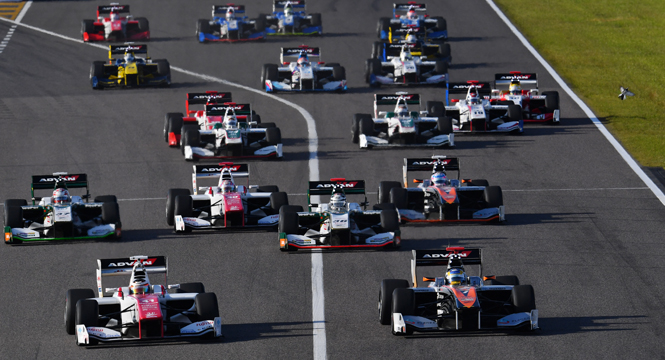
In the 1950s, the Fédération Internationale de I’Automobile (FIA) launched the Drivers’ Championship to find the world’s fastest driver in formula cars – the purest form of racing machine. That ethos was passed on to all FIA national member organizations.
Top-level formula motor racing has been held in Japan in various forms since 1973, when Formula 2000 was launched. The competition morphed into Formula Two in 1978 and then Formula 3000 in 1987. Japan Race Promotion Inc. (JRP) was established in 1995 and relaunched the competition as Formula Nippon the following year. Hiroshi Shirai, previously project leader on Honda’s Formula One race team, became JRP president in 2010. In 2013, the name of the competition was changed again to Japanese Championship SUPER FORMULA and a bold plan was implemented to upgrade the race cars and lift the profile of the competition with the clear aim of spreading the appeal of SUPER FORMULA from Japan to other parts of Asia and transforming it into a third great open-wheel racing competition after Formula One and Indy Car. (The competition’s name was changed to Japanese SUPER FORMULA Championship from the 2016 season).
In the early days, formula racing in Japan was led by top drivers such as Kunimitsu Takahashi, Kazuyoshi Hoshino and Satoru Nakajima, who later competed on the global stage in Formula One. In the Formula 3000 era, Michael Schumacher and Heinz-Harald Frentzen competed in Japan, as did Ralf Schumacher, Pedro de la Rosa, Eddie Irvine and Toranosuke Takagi in the mid 1990s, all tenacious drivers aiming to make it into Formula One.
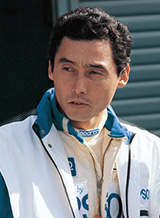
Satoru Nakajima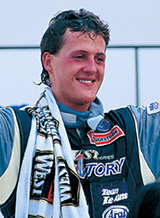
Michael Schumacher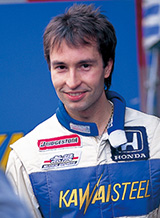
Heinz-Harald Frentzen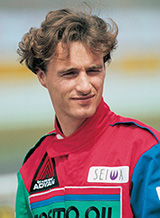
Eddie Irvine
More recently, drivers such as FIA World Endurance Champion Andre Lotterer, Benoit Treluyer, Loic Duval and Kazuki Nakajima have been winners of the Japanese Championship. In 2015, Kamui Kobayashi, who competed in Formula One until the previous season, made a triumphant return to Japanese circuits, mesmerizing spectators with his driving skills. Stoffel Vandoorne, who was GP2 2015 Champion and made his Formula One debut in 2016 for McLaren Honda, competed in the 2016 SUPER FORMULA series, while GP2 2016 Champion Pierre Gasly will compete in the 2017 series. Interest from drivers like Vandoorne and Gasly shows how SUPER FORMULA is increasingly seen as an important competition by the world’s top drivers.
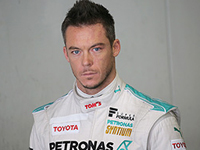
André Lotterer

Kazuki Nakajima

Kamui Kobayashi

Stoffel Vandoorne

Pierre Gasly
The SUPER FORMULA race car chassis is the Dallara SF14, which is based on a quick-and-light design concept. Toyota and Honda supply 2.0-liter turbo-charged inline-4 direct injection engines and are introducing technical innovations to deliver ongoing improvements in fuel efficiency and power output. Advanced Japanese-made fuel flow restrictors are also used to control engine performance, helping to make races safer. These chassis and engine improvements have resulted in racing cars with greater control and stability, making them highly responsive and agile. Drivers who competed in the 2016 SUPER FORMULA series say the cars achieve cornering speeds that are even higher than in Formula One. From the 2016 season, Yokohama Rubber became the competition’s sole official tire supplier, marking its return to top level formula racing after a hiatus of around 20 years. The company supplies its ADVAN racing tires, which are safe and highly competitive. It has also developed tires with two different compounds for use during a single race, adding to entertainment value for spectators. Yokohama Rubber's involvement heralds a new era in the SUPER FORMULA competition.
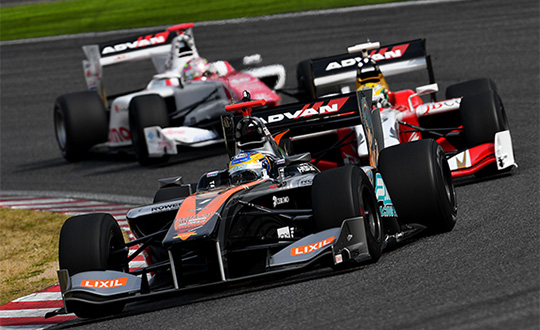
Excluding the engines, SUPER FORMULA racing cars are essentially single-manufacturer machines, meaning qualifying races are fought over extremely tight margins of less than one second. The outcome of each race comes down to pure competition between drivers and a battle of wits between engineers working to get the most out of the cars.
SUPER FORMULA races are run on world championship tracks such as Suzuka Circuit, Fuji Speedway and Twin Ring Motegi. Races are also held on old-style circuits such as Sportsland Sugo, Okayama International and Autopolis, where even the smallest errors are punished, making them popular among overseas drivers due to the narrow margins involved. The diverse nature of circuits during the season leads to even more competitive racing.
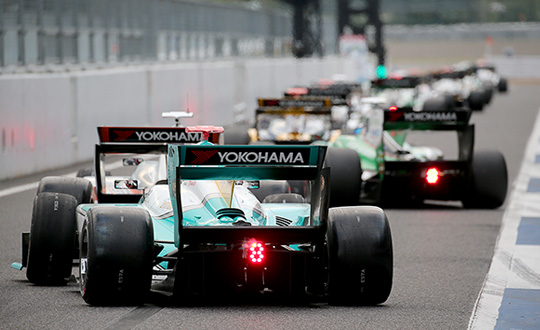
SF14 Specifications
| Chassis | |
|---|---|
| Supplier | Dallara Automobili S.p.A (Italy) |
| Overall Length | 5,268mm |
| Wheelbase | 3,165mm |
| Overall Width | 1,910mm |
| Overall Height | 960mm |
| Minimum Weight | 660kg (driver on-board) |
| Gearbox | Ricardo: 6 forward speed, paddle system |
| Brake | Brembo calipers, Brembo carbon disc |
| Steering System | KYB electric power steering system |
| Front Suspension | Pushrod suspension, torsion bar spring |
| Rear Suspension | Pushrod suspension |
| Safety Standards | Conform to FIA 2010 F1 |
| Engine | |
| Supplier / Type | Honda Motor Co., Ltd. / HR-417E Toyota Motor Corporation / RI4A |
| Capacity | 2,000cc |
| Engine Type | Inline-four, direct injection |
| Aspiration | Turbocharged (by Garrett Systems) |
| Minimum Weight | 85kg |
| Power | 405kw (550ps) and over |
| Power Limiter | Fuel restrictor (to restrict fuel flow) |
| Tyre | |
| Supplier | Yokohama Rubber Co., Ltd. |